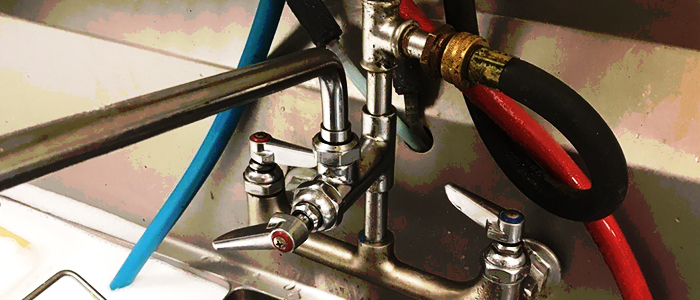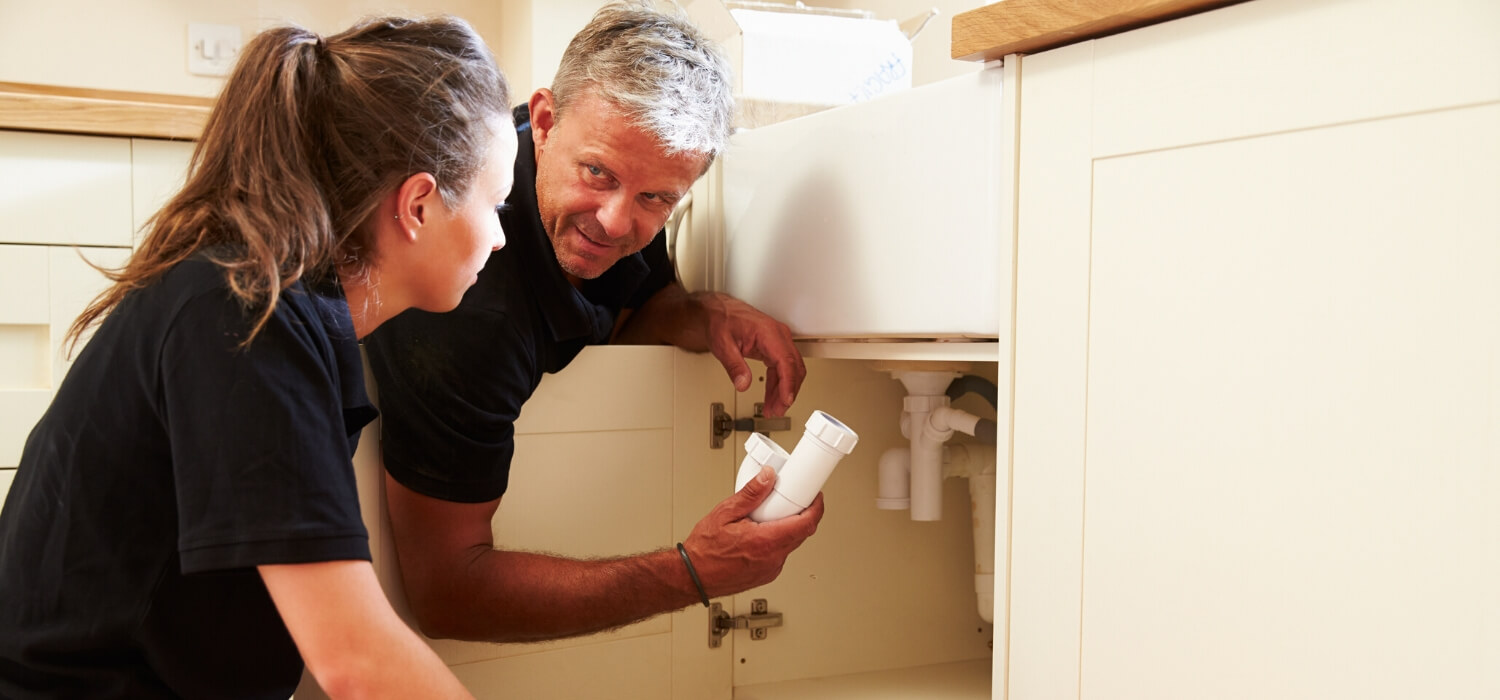How do you feel in relation to Understanding Your Home's Plumbing Anatomy?

Understanding how your home's pipes system functions is crucial for every single home owner. From supplying tidy water for drinking, cooking, and showering to securely getting rid of wastewater, a properly maintained pipes system is important for your household's health and comfort. In this comprehensive overview, we'll discover the complex network that comprises your home's plumbing and offer tips on upkeep, upgrades, and managing usual problems.
Introduction
Your home's plumbing system is greater than simply a network of pipes; it's a complex system that guarantees you have accessibility to tidy water and efficient wastewater removal. Knowing its parts and exactly how they collaborate can help you protect against pricey repair services and guarantee everything runs efficiently.
Fundamental Components of a Pipes System
Pipelines and Tubing
At the heart of your pipes system are the pipelines and tubes that lug water throughout your home. These can be made from different materials such as copper, PVC, or PEX, each with its advantages in terms of durability and cost-effectiveness.
Components: Sinks, Toilets, Showers, and so on.
Fixtures like sinks, commodes, showers, and tubs are where water is used in your house. Comprehending how these components link to the pipes system assists in diagnosing troubles and preparing upgrades.
Shutoffs and Shut-off Points
Shutoffs manage the circulation of water in your pipes system. Shut-off shutoffs are essential during emergency situations or when you require to make repair work, allowing you to separate parts of the system without interfering with water flow to the entire home.
Water Supply System
Key Water Line
The main water line links your home to the municipal water system or a private well. It's where water enters your home and is dispersed to various components.
Water Meter and Pressure Regulatory Authority
The water meter measures your water use, while a stress regulator makes certain that water streams at a secure pressure throughout your home's pipes system, protecting against damage to pipelines and fixtures.
Cold Water vs. Warm water Lines
Understanding the distinction in between cold water lines, which supply water straight from the major, and hot water lines, which lug heated water from the water heater, aids in troubleshooting and preparing for upgrades.
Water drainage System
Drain Water Lines and Traps
Drain pipelines carry wastewater far from sinks, showers, and commodes to the sewer or septic system. Catches avoid sewage system gases from entering your home and additionally trap particles that can cause blockages.
Air flow Pipes
Ventilation pipelines permit air into the drain system, stopping suction that can slow drain and create catches to vacant. Proper ventilation is vital for keeping the integrity of your plumbing system.
Significance of Correct Water Drainage
Ensuring appropriate drain protects against back-ups and water damages. Regularly cleaning up drains and preserving catches can protect against costly repair work and prolong the life of your pipes system.
Water Heater
Sorts Of Hot Water Heater
Water heaters can be tankless or standard tank-style. Tankless heating systems warm water as needed, while containers save warmed water for prompt usage.
Upgrading Your Plumbing System
Reasons for Upgrading
Upgrading to water-efficient fixtures or replacing old pipes can improve water quality, decrease water expenses, and enhance the value of your home.
Modern Plumbing Technologies and Their Benefits
Check out innovations like wise leak detectors, water-saving bathrooms, and energy-efficient water heaters that can save money and lower ecological influence.
Price Factors To Consider and ROI
Compute the in advance expenses versus long-lasting cost savings when thinking about pipes upgrades. Several upgrades spend for themselves with minimized utility bills and fewer repairs.
How Water Heaters Attach to the Pipes System
Recognizing exactly how water heaters connect to both the cold water supply and hot water circulation lines aids in detecting problems like inadequate hot water or leaks.
Upkeep Tips for Water Heaters
On a regular basis purging your water heater to remove debris, checking the temperature setups, and checking for leaks can extend its lifespan and boost power efficiency.
Common Pipes Problems
Leaks and Their Reasons
Leakages can happen due to maturing pipelines, loose installations, or high water stress. Dealing with leaks without delay stops water damage and mold and mildew development.
Obstructions and Obstructions
Clogs in drains pipes and bathrooms are frequently caused by purging non-flushable items or a build-up of oil and hair. Using drainpipe screens and bearing in mind what decreases your drains can protect against clogs.
Indicators of Plumbing Troubles to Look For
Low tide pressure, slow-moving drains, foul odors, or abnormally high water expenses are signs of possible plumbing troubles that ought to be resolved immediately.
Plumbing Upkeep Tips
Regular Assessments and Checks
Schedule yearly plumbing assessments to catch problems early. Look for indications of leaks, rust, or mineral buildup in faucets and showerheads.
Do It Yourself Maintenance Tasks
Straightforward tasks like cleaning tap aerators, looking for bathroom leaks making use of dye tablets, or protecting exposed pipelines in chilly climates can stop major pipes problems.
When to Call a Specialist Plumbing Technician
Know when a plumbing concern requires specialist competence. Attempting complicated repairs without correct knowledge can bring about more damages and higher fixing costs.
Tips for Lowering Water Usage
Straightforward practices like dealing with leaks without delay, taking much shorter showers, and running full tons of washing and recipes can conserve water and lower your energy bills.
Eco-Friendly Plumbing Options
Think about lasting plumbing materials like bamboo for flooring, which is durable and green, or recycled glass for kitchen counters.
Emergency Preparedness
Actions to Take Throughout a Pipes Emergency
Know where your shut-off valves are located and exactly how to switch off the water in case of a burst pipe or major leak.
Importance of Having Emergency Get In Touches With Helpful
Maintain call details for local plumbings or emergency services easily offered for fast action throughout a pipes situation.
Ecological Influence and Conservation
Water-Saving Fixtures and Appliances
Installing low-flow faucets, showerheads, and toilets can considerably decrease water usage without compromising performance.
DIY Emergency Fixes (When Appropriate).
Short-term repairs like utilizing air duct tape to spot a dripping pipe or putting a container under a leaking faucet can reduce damage until a professional plumber arrives.
Verdict.
Recognizing the makeup of your home's pipes system equips you to preserve it efficiently, saving time and money on fixings. By adhering to normal upkeep regimens and remaining notified regarding modern plumbing modern technologies, you can guarantee your pipes system operates efficiently for years ahead.
Understanding Your Home Plumbing System: A Comprehensive Guide
Plumbing System: The Lifeline of Your Home
At its core, the plumbing system is designed to perform two primary functions: bring fresh water into your home and remove wastewater. The system is a network of pipes, fixtures, and other components that transport water and sewage. Residential plumbing systems include potable water supply lines, drain-waste-vent (DWV) systems, and various plumbing fixtures that make water use in daily tasks possible.
Key Components:
Water Supply: This part of your plumbing system brings municipal water into your home, passing through the main water supply line. It s responsible for supplying all water needs, from drinking to bathing.
Drainage System: It carries waste and water away from your home to the sewer or septic system. This system includes all the piping within your home that leads to external sewage or septic systems.
Vent System: An essential yet often overlooked component, the vent system allows sewer gases to escape and lets air into the drainpipes, ensuring water and waste move correctly through the system.
Fixture: More Than Just Taps and Toilets
Plumbing fixtures are the most interactive parts of the plumbing system, including faucets, showers, toilets, and sinks. Each fixture is connected to the plumbing system and plays a role in either the delivery of freshwater or the disposal of waste and wastewater.
Types of Fixtures:
Faucets and Sinks: Used for washing hands, dishes, and other daily water needs. Toilets: Dispose of human waste through the sewage system. Bathtubs and Showers: Provide bathing facilities, requiring both hot and cold water supply. Water Supply: The Source of Life
The water supply system is a critical component, ensuring that potable water is available throughout your home for various uses, including drinking, cooking, and cleaning. This system consists of pipes that distribute water to different parts of the house, controlled by valves to regulate the water flow.
Types of Plumbing: Materials and Methods
Various types of plumbing systems and materials are used in residential settings, each with its advantages and applications. From copper and PVC pipes for water supply to cast iron and ABS for drainage, the choice of materials can impact the longevity and efficiency of your plumbing system.
https://intownplumbingtx.com/articles/home-plumbing-system-guide/

As a devoted person who reads about Plumbing Installation 101: All You Need to Know, I thought sharing that excerpt was valuable. Sharing is caring. Helping others is fun. Thanks a lot for going through it.
Click Here